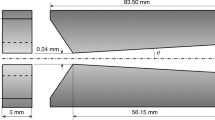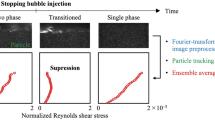Abstract
Critical heat flux in a two-phase thermosyphon is usually dealt with from two different ways in a limitation of liquid flow rate falling along a vertical tube: one is a maximum falling liquid rate due to the envelope method, and the other one due to instability of falling liquid film. The difference between the maximum and instability criteria is first made clear. The CHF in the thermosyphon is shown to be predicted well by the maximum liquid rate due to the maximum criterion better than due to the instability criterion. In addition, the comparison implies that the CHF phenomenon in the thermosyphon is considered to be caused when the falling liquid reaches the maximum value rather than when the instability of the falling liquid on the interface is brought about.
Similar content being viewed by others
Author information
Authors and Affiliations
Additional information
Received on 1 December 1997
Rights and permissions
About this article
Cite this article
Mihara, S., Monde, M. Characteristics of critical heat flux in two phase thermosyphon – relationship between maximum falling liquid rate and instability on interface of falling liquid film. Heat and Mass Transfer 34, 135–142 (1998). https://doi.org/10.1007/s002310050241
Issue Date:
DOI: https://doi.org/10.1007/s002310050241




